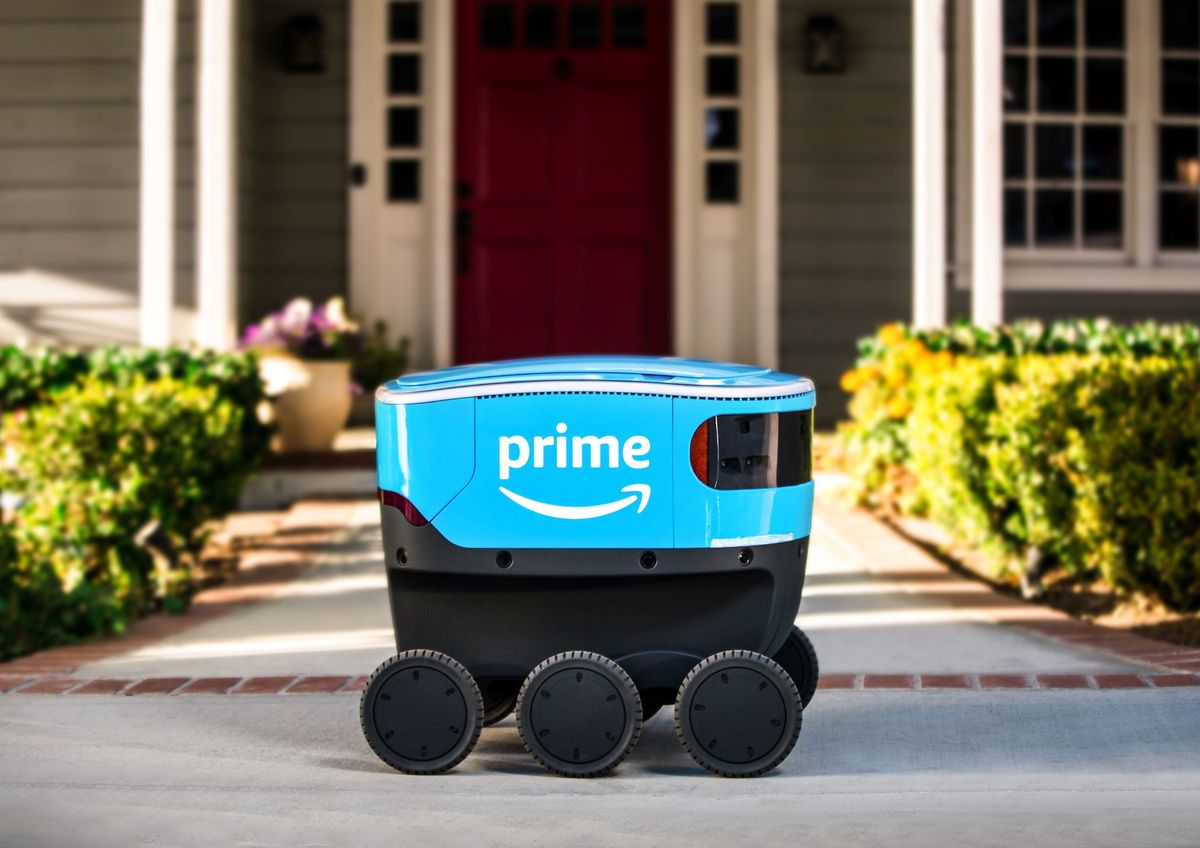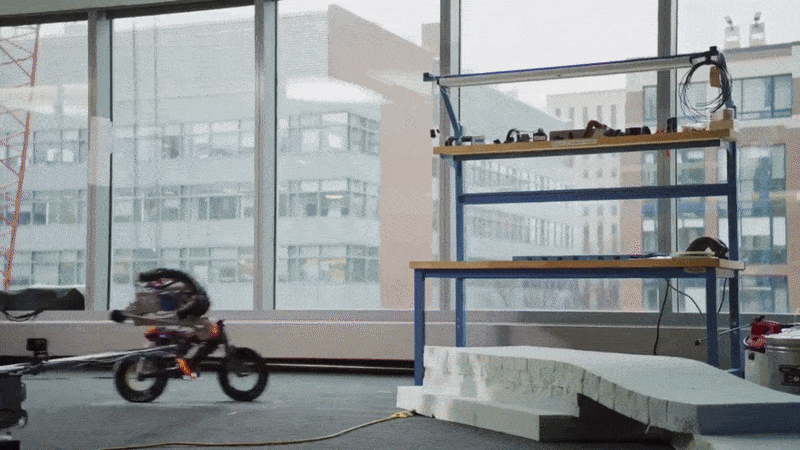Video Friday is your weekly selection of awesome robotics videos, collected by your Automaton bloggers. We’ll also be posting a weekly calendar of upcoming robotics events for the next few months; here’s what we have so far (send us your events!):
HRI 2019—11–14 March 2019–Daegu, Korea
Nîmes Robotics Festival–17–19 May 2019–Nîmes, France
ICRA 2019–20–24 May 2019–Montreal
Let us know if you have suggestions for next week, and enjoy today’s videos.
At Amazon, we continually invest in new technologies to benefit customers. We’ve been hard at work developing a new, fully electric delivery system–Amazon Scout–designed to safely get packages to customers using autonomous delivery devices. These devices were created by Amazon, are the size of a small cooler, and roll along sidewalks at a walking pace. Starting today, these devices will begin delivering packages to customers in a neighborhood in Snohomish County, Washington.
They’ve managed to make it look almost but not quite exactly like another six-wheeled delivery robot we’ve seen around.
[ Amazon ]
In October 2018 we carried out field trials for our navigation and planning system to use the ANYmal robot for inspection in the Fire Service College as part of the ORCA and RAIN Research Hubs.
[ ORI ]
Here’s how Omron envisions mobile robots assisting workers in factories to both increase productivity and help with labor shortage.
See how Omron production plants in Japan handle manufacturing challenges. Handling high-mix and low-volume production, whilst compensating labour shortage. See how LD mobile robots are used to automate material transport and increase efficiency, to accelerate human-machine collaboration.
[ Omron ]
Engineered Arts has been working on Byrun, their bipedal walking robot, for quite a while now—they’re up to version 4 of their prototype.
Still a couple years to go, but looking good!
[ Engineered Arts ]
Thanks, Michael!
We’ve been wondering when (and how) Anki’s new Vector robot would show up on the “Life with Cozmo” YouTube channel, and all is revealed in this magical new episode.
Sorry Cozmo (and Vector), but that owl robot is my new favorite.
[ Life with Cozmo ]
Thanks, David!
You don’t really think about how nuanced using utensils is until you try to get a robot to do it, so figuring out exactly how humans do it first is probably a good idea.
[ UW ]
We didn’t go to CES because we’re tired and old, but Misty Robotics did, and this is what they saw.
[ Misty Robotics ]
Can reaction wheels control a drone? Theoretically, sure. Skip to about 18:00 into this video to see whether it works or not.
[ YouTube ]
Fetch robots are hard at work in Ryder warehouses, moving boxes around and sterilizing the floor with their powerful blue lasers.
[ Fetch Robotics ]
Thanks, Tim!
The Official Wrap-up of ABU ROBOCON 2018 Ninh Binh, Vietnam!
ABU ROBOCON 2019 will be held in Ulaanbaatar, Mongolia.
[ RoboCon ]
Robotic technologies have revolutionized industrial manufacturing because of their ability to locate tools in 3D space with superhuman accuracy. This ability has not yet transferred to mobile robots, however. As a result, mobile robots still struggle to perform manipulation tasks quickly and reliably outside of industrial environments. The need for such capabilities are prevalent in emerging applications such as building construction, mining, space and service robotics, where mobile robots need to modify their environment through physical interaction. The grand challenge in developing such systems lies in the requirement for seamless integration of advanced sensing, control, and hardware systems. This systems-level challenge motivates the need for researchers working in these different areas to come together to consider the broader goal of developing highly capable mobile manipulation systems.
[ HAMM ]
Exercise like this probably does the opposite that it does for humans, right?
[ RE2 ]
On the modern battlefield, Endeavor’s robots work right alongside the warfighter to extend their abilities. To see, to hear, to sense, to touch. To help them complete the mission and return safely.
The video might be just a little over the top, but the fact is, these robots really are out there saving lives, which is pretty awesome.
I like that with Softbank’s Whiz cleaning robot, you push it around to create a cleaning route, and then it cleans that route. There’s no extended, fussy map-making phase.
And of course, having a mobile robot is no good unless you have another, larger mobile robot to carry it around.
Learn why Doug Albin, a corn and soybean farmer in Minnesota, chose AeroVironment Quantix and AV DSS to obtain crop-health insights to help improve farming efficiencies and profitability at Albin Farms.
[ AeroVironment ]
We propose a high-speed 3-D sensing system with active target-tracking. The system consists of a high-speed camera head and a high-speed projector, which are mounted on a two-axis active vision system. By measuring coded structured light projected by the projector, 3-D measurement at a rate of 500 fps is achieved. The measurement range was increased because of the active tracking, and the shape of the target was accurately observed even when it moved quickly.
In this episode of “Talk Techy To Me,” we’re learning about how autonomy can save homes from bush fires and even explore the depths of the oceans. On top of this, we’re also talking about our Alpha Pilot international competition where teams will develop artificial intelligence algorithms to pilot drones.
Oof. These folks need to sit in more comfortable chairs. Or get a little bit drunk. Or not have a script. I don’t know, something.
[ Lockheed Martin ]
A 15-minute video history of robots learning how to juggle, courtesy Chris Atkeson.
[ Chris Atkeson ]
Tomaso Poggio is a professor at MIT and is the director of the Center for Brains, Minds, and Machines. Cited over 100,000 times, his work has had a profound impact on our understanding of the nature of intelligence, in both biological neural networks and artificial ones. He has been an advisor to many highly impactful researchers and entrepreneurs in AI, including Demis Hassabis of DeepMind, Amnon Shashua of MobileEye, and Christof Koch of the Allen Institute for Brain Science. This conversation is part of the Artificial Intelligence podcast and the MIT course 6.S099: Artificial General Intelligence.
[ Lex Fridman ]
This week’s CMU RI Seminar comes from Dave Rollinson at HEBI Robotics. #SuperDave
In 2014, I was lucky enough to be one of 5 people to start HEBI Robotics, with the dream of eventually making the task of building custom robots as easy as building with Lego. A few years later we are now 10 people, and our first product, a series of modular force-controlled actuators, is rapidly being adopted for research and development. This talk will discuss the technical aspects of developing force-controlled actuators and the software tools for controlling them, why we are pursuing series-elastic actuation, and various challenges that we face during development. I will also talk about what it’s like to be an engineer who is increasingly involved with the business aspects of a growing company.
[ CMU RI ]
Evan Ackerman is a senior editor at IEEE Spectrum. Since 2007, he has written over 6,000 articles on robotics and technology. He has a degree in Martian geology and is excellent at playing bagpipes.
Erico Guizzo is the Director of Digital Innovation at IEEE Spectrum, and cofounder of the IEEE Robots Guide, an award-winning interactive site about robotics. He oversees the operation, integration, and new feature development for all digital properties and platforms, including the Spectrum website, newsletters, CMS, editorial workflow systems, and analytics and AI tools. An IEEE Member, he is an electrical engineer by training and has a master’s degree in science writing from MIT.



